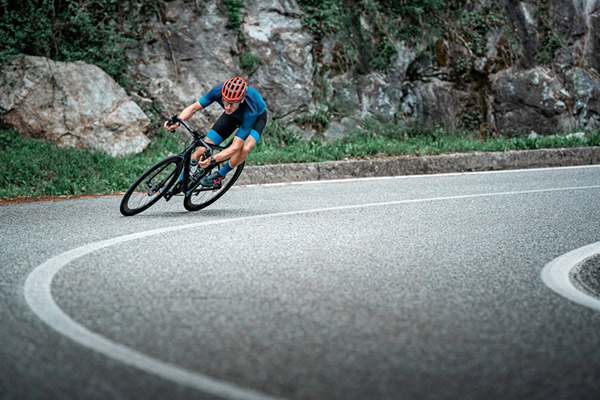You love the challenge and energy of your indoor cycling workouts, but you’re not sure how much they’re moving you toward your fitness goals. If you’re someone who likes to know how much you’re eating and burning in a day, you’re probably wondering how many calories are burned cycling (in an average indoor cycling session).
Here’s what to know about the calorie burn of your cycling workouts.
Calories Burned Indoor Cycling
How many calories burned cycling, running, or any other exercise can vary from person to person and from workout to workout. But here’s a look at how many approximate calories you can expect to burn in a given cycling workout based on your body weight and workout intensity.
Light to moderate effort (51 to 89 watts) for 1 hour:
| Weight | 100 lbs | 125 lbs | 150 lbs | 175 lbs | 200 lbs | 225 lbs | 250 lbs |
| Calories | 218 | 273 | 327 | 382 | 436 | 491 | 546 |
Moderate to vigorous effort (90 to 100 watts) for 1 hour:
| Weight | 100 lbs | 125 lbs | 150 lbs | 175 lbs | 200 lbs | 225 lbs | 250 lbs |
| Calories | 309 | 386 | 464 | 541 | 618 | 696 | 773 |
Vigorous effort (101 to 160 watts) for 1 hour:
| Weight | 100 lbs | 125 lbs | 150 lbs | 175 lbs | 200 lbs | 225 lbs | 250 lbs |
| Calories | 400 | 500 | 600 | 700 | 800 | 900 | 1,000 |
(Generated from the Compendium of Physical Activities and Cornell University’s METS to Calories Calculator.)
If you want to get a more accurate read on how many calories you burn during your ride, it’s best to use a heart rate tracker. That’s why the BODi Bike comes with a Polar OH1 Heart Rate Monitor to help you get a precise measurement of calories burned in each of your personalized heart rate zones.
How to Choose the Right Intensity for a Cycling Class
Your intensity level will affect the amount of calories you burn during your indoor cycling class, but you don’t want to ramp things up too quickly.
If you’re a beginner and can’t join a beginner class, “get as close to what the instructor is calling out as you can, and build up strength and endurance over time,” says Alex Joy Pucci, CPT, who’s taught indoor cycling for nearly a decade. You know your body best, so if something feels too challenging, back off a bit in speed or resistance.
If you have to dial way back, that’s OK. “No cycling instructor expects someone new to crush it on the first try,” says Pucci. “Be patient with yourself.”
And don’t be afraid to tailor a class to your own energy levels. “Your speed, your power output, your resistance are all up to you at the end of the day,” she says. “The best thing about indoor cycling is that you’re in control.”
Does Your Weight Matter in Indoor Cycling?
Weight and body composition will always impact your calorie burn. “People who are heavier or more muscular generally burn more calories,” Pucci explains. Men will also often torch more calories during an indoor cycling session than women, she adds.
The reason is simple: The larger you are, the more energy expenditure your body requires.
Other factors such as genetics and fitness level can also impact how many calories you burn. “As you get a bit more fit and your body becomes more efficient, you might burn fewer calories doing the same workout than when you started,” Pucci adds.
You’ll also burn fewer calories if you lose weight since your body requires less energy to move. But this, too, can vary, says Pucci. “I like to remind my clients that everybody and every body is a bit different,” she says.
Calories Burned on a Stationary Bicycle vs Road Bike

On average, outdoor cycling burns a similar amount of calories as indoor cycling. But, again, there are a lot of different factors here. A 150-pound person will burn roughly 453 calories during 50 minutes of outdoor cycling if they’re going 12 to 13 miles per hour. Cycling outside at 5.5 mph will burn about 226 calories in the same amount of time.
(To get the most precise comparison between indoor and outdoor cycling, however, you’d need to use a power meter to determine your watts.)
The amount of calories you burn while outdoor cycling depends on not only your speed, but also the terrain. You’d need to put more effort behind your pedaling to get up hills than you would while cycling down a flat street.
One small study found that participants cycled harder outdoors than indoors, even when they felt like they were putting in the same effort in both situations. The increased effort would result in a higher calorie burn.
Ultimately, the difference may not matter if you’re more likely to show up for indoor cycling workouts.
